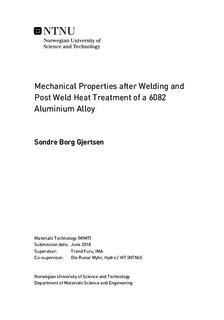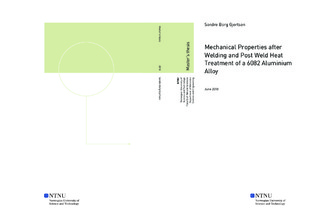| dc.description.abstract | Lightweight materials are currently gaining popularity and are sought for by the construction and transportation industries. The heat-treatable 6xxxx series aluminium alloys are popular in lightweight products by combining good formability in the solution treated and natural aged state (T4) and high in-service strength in the artificial aged temper (T6). Arc welding is an industrial technique used for joining aluminium structures, but welded joints of the 6xxx-series lose a significant percentage of their strength in the heat affected zone (HAZ).
The aim of this study has been to improve the strength for a welded component by manipulating the HAZ geometry with a laser. The idea of manipulating the HAZ geometry is to generate a more complex geometric shape of the HAZ in order to increase the global strength of the welded component. The potential of applying post weld laser heat treatment if successful is large since the softest part of a weldment of EN AW-6082-T6 is the HAZ. Increasing the strength and understanding the limitations of the HAZ are important to minimize weight for new structural designs.
In the process a laser heat distribution has been studied and a heat distribution model based on the Medium thick plate solution after Rosenthal [1] is created. The model is used to study efficiency factor and the impact of changing laser parameters to establish optimal parameters. The laser treatment has been conducted on an extruded profile of EN AW-6082-T6, which have been welded with metal inert gas (MIG) welding. A test setup is established where four specimens have been laser heat treated, tested and compared to an untreated specimen. Cross-weld tensile testing, hardness measurements and microscopy of the weld have been performed, analysed and reported in this thesis. The strength has not been increased by the laser treatment conducted in thesis as the parameters used created locally too high temperature. However, ductility and fracture resistance have been improved. A set of laser parameters which is anticipated to generate a positive laser heat treatment have been generated. | |

